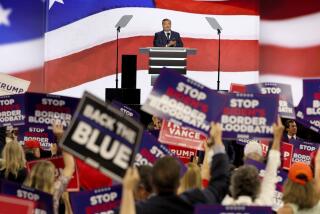Crime Fears Cramp New Yorkers’ Style : Violence: Caution is the watchword as lurid slayings grab headlines. But some officials insist the city is not that dangerous, nor the situation new.
- Share via
NEW YORK — Fueled by a series of spectacular incidents and constant media attention ranging from the cover of Time and People magazines to local tabloids and television, fear of crime is changing the way many New Yorkers live.
Like many other residents, Herbert J. Sturz, a former deputy mayor for criminal justice, has routinely put “mugger’s money” for potential holdup men in his pocket when he goes out late at night. But even that precaution is no longer reassuring to Stutz, who has stopped taking late night walks from his upper East Side Manhattan apartment to purchase the first edition of his morning paper.
“I think crime is a real consideration in neighborhoods that used to feel secure,” said Michael Taylor, president of Precision Films Inc., who lives just a few blocks away from Sturz. Taylor no longer rides the subway. His 14-year-old son Matthew never takes a ball to play basketball at a nearby public school--one of the most desirable in Manhattan--because roaming young gangs steal athletic equipment. Several of Matthew’s friends have been mugged on a playground further uptown.
David Baker went jogging around the Central Park reservoir well after dark last Sunday night. When he returned to his upper West Side Manhattan apartment, his wife clearly was worried about him. She wouldn’t have reacted that way a year ago, he said.
Baker, a 3rd-degree black belt in Shorin Ryu karate, is director of the Midtown Karate Dojo in Manhattan. He said that during the summer, enrollment at his school increased by 35%. Some other schools also report larger than usual numbers of students signing up for the martial arts.
These fears of random violence are magnified in poorer neighborhoods, where crime is much more prevalent.
The fact New York last year ranked ninth in homicide statistics below such cities as Washington, Detroit, New Orleans and Dallas seems largely ignored in the face of all the anxiety.
Crime, always a front-page item here, has received unparalleled attention in recent days. Brian Watkins, a 22-year-old tourist from Provo, Utah, was stabbed to death Sept. 2 in the subway trying to protect his mother from a gang who wanted money to go dancing. Three days earlier, a deputy district attorney was slain in a random shooting in the Bronx and a Brooklyn politician was shot to death. Earlier in the month, three teen-agers were convicted in the gang rape of a woman jogger in Central Park in 1989.
Police statistics show violent crime rising rapidly in Manhattan--up 25.3% for homicides, 19.2% for robberies and 15.5% for assaults compared to three years ago. The statistics mirror trends in the rest of the city.
Subway crime is particularly threatening to many riders. For the first six months of this year, overall felonies in the subway system rose 17% while robberies increased by 22%.
“There is a high level of violent rampant crime in the city and it is very disturbing to people,” said Manhattan Dist. Atty. Robert M. Morgenthau. “People are very concerned about it, and they have a right to be concerned about it. But that does not mean that people should leave the city.”
Nevertheless, in private and public conversations, the topic of leaving seems at least as high as during the dark days of New York’s fiscal crisis of the 1970s.
A poll of 1,000 New Yorkers taken for Time magazine and Cable News Network by Yankelovich Clancy Shulman accompanied a Time cover story this month highly critical of the city. The poll found 59% would move somewhere else if they could select where they could live.
Many residents have mixed their perceptions of crime with performance appraisals of Mayor David N. Dinkins, who promised during his campaign last year to become the toughest mayor on crime the city has ever seen.
Some of the mayor’s critics charge that he has been slow to anger and even slower to react to the crime crisis, more concerned about matters of style than substance.
Dinkins has responded by seeking to mobilize clergymen and neighborhood groups in a crusade against crime, and ordering Police Commissioner Lee Brown to come up with plans by Oct. 1 to increase the number of officers on the streets. He also has shared with New Yorkers his own fear of what it was like to be robbed at gunpoint while working in a Harlem liquor store 38 years ago.
This week he said that recent concern about crime was based on well-publicized incidents and attacks in neighborhoods outside of poor minority areas of the city, where the problems of crime and violence are not new.
“We’ve had this problem, and now I guess it has gone beyond our borders and others have become concerned,” Dinkins said in a radio interview on a New York station with a largely minority audience. “Fact of the matter is we have been concerned since day one.”
Morgenthau said the crime wave really started in 1985--well before the Dinkins Administration. He now fears the chorus of calls for more street police will come at the expense of detectives who are badly needed for investigations and other components of the criminal justice system, including the courts.
Gov. Mario M. Cuomo, who is running for reelection, called for hiring 5,000 more policemen but has promised no additional state funds. U.S. Sen. Alfonse M. D’Amato (R-N.Y.) argued that 4,400 more police could be hired by putting off repairs on roads, bridges and subways.
More to Read
Sign up for Essential California
The most important California stories and recommendations in your inbox every morning.
You may occasionally receive promotional content from the Los Angeles Times.













